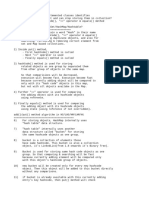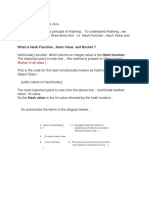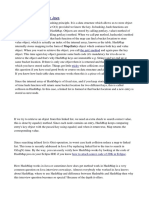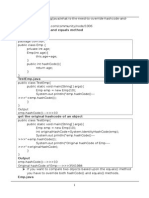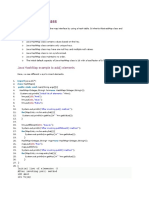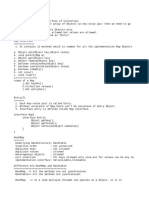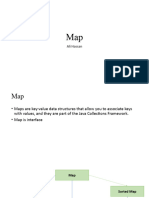0% found this document useful (0 votes)
295 views5 pagesInternal Working of Hashmap
HashMap uses hashing to store key-value pairs in buckets, where the index of the bucket is calculated from the key's hashcode, and a linked list is used if multiple keys hash to the same bucket to handle collisions; it provides an example of putting three entries into a HashMap where the third entry causes a collision since it has the same hashcode as the first, which is resolved by adding it to the linked list at that bucket index.
Uploaded by
mukesh singhCopyright
© © All Rights Reserved
We take content rights seriously. If you suspect this is your content, claim it here.
Available Formats
Download as DOCX, PDF, TXT or read online on Scribd
0% found this document useful (0 votes)
295 views5 pagesInternal Working of Hashmap
HashMap uses hashing to store key-value pairs in buckets, where the index of the bucket is calculated from the key's hashcode, and a linked list is used if multiple keys hash to the same bucket to handle collisions; it provides an example of putting three entries into a HashMap where the third entry causes a collision since it has the same hashcode as the first, which is resolved by adding it to the linked list at that bucket index.
Uploaded by
mukesh singhCopyright
© © All Rights Reserved
We take content rights seriously. If you suspect this is your content, claim it here.
Available Formats
Download as DOCX, PDF, TXT or read online on Scribd
/ 5



